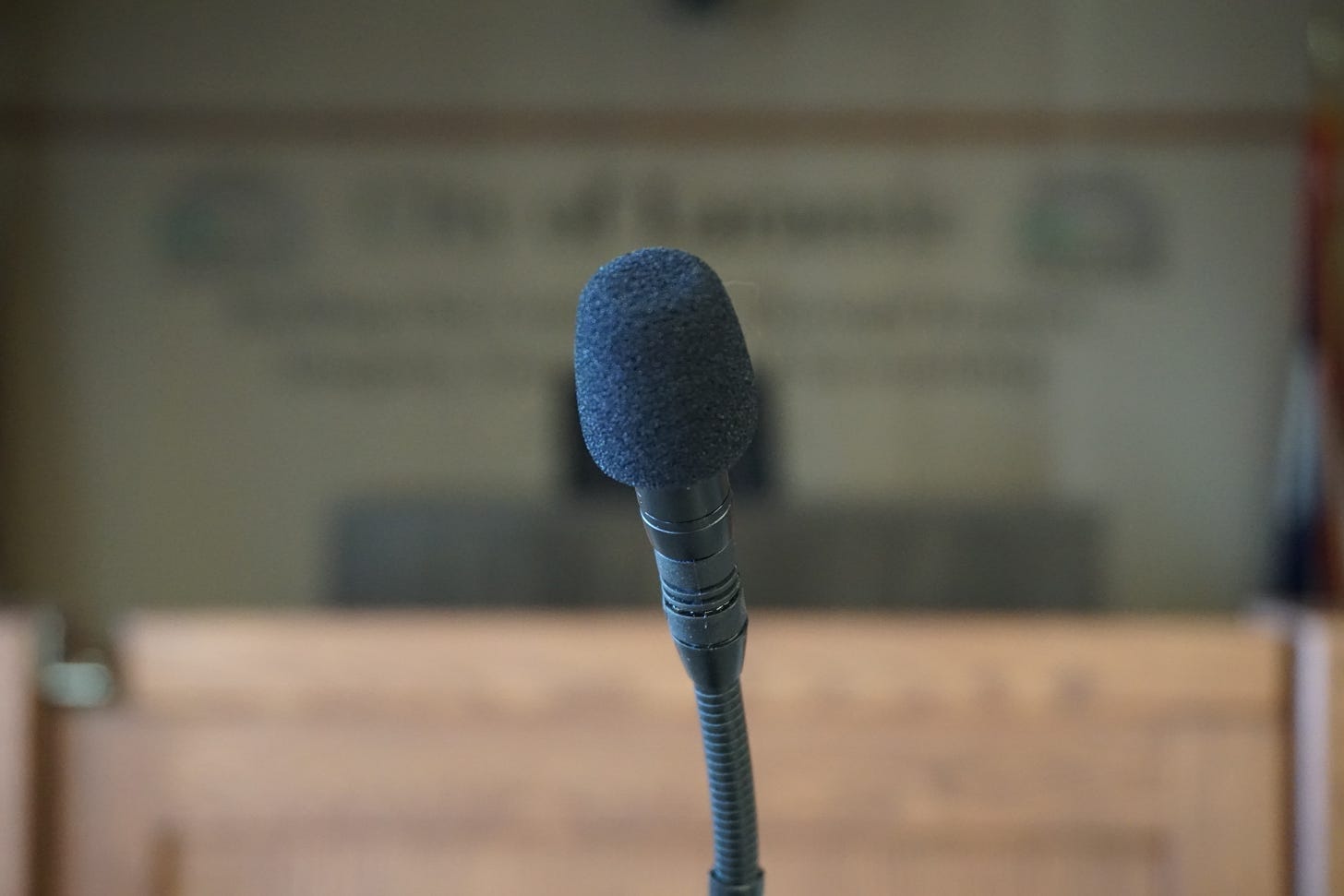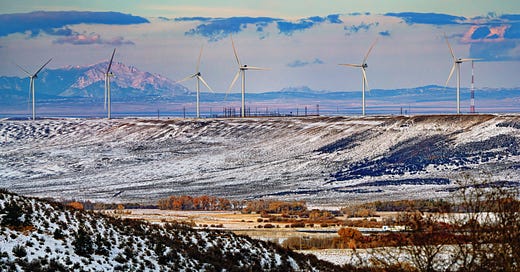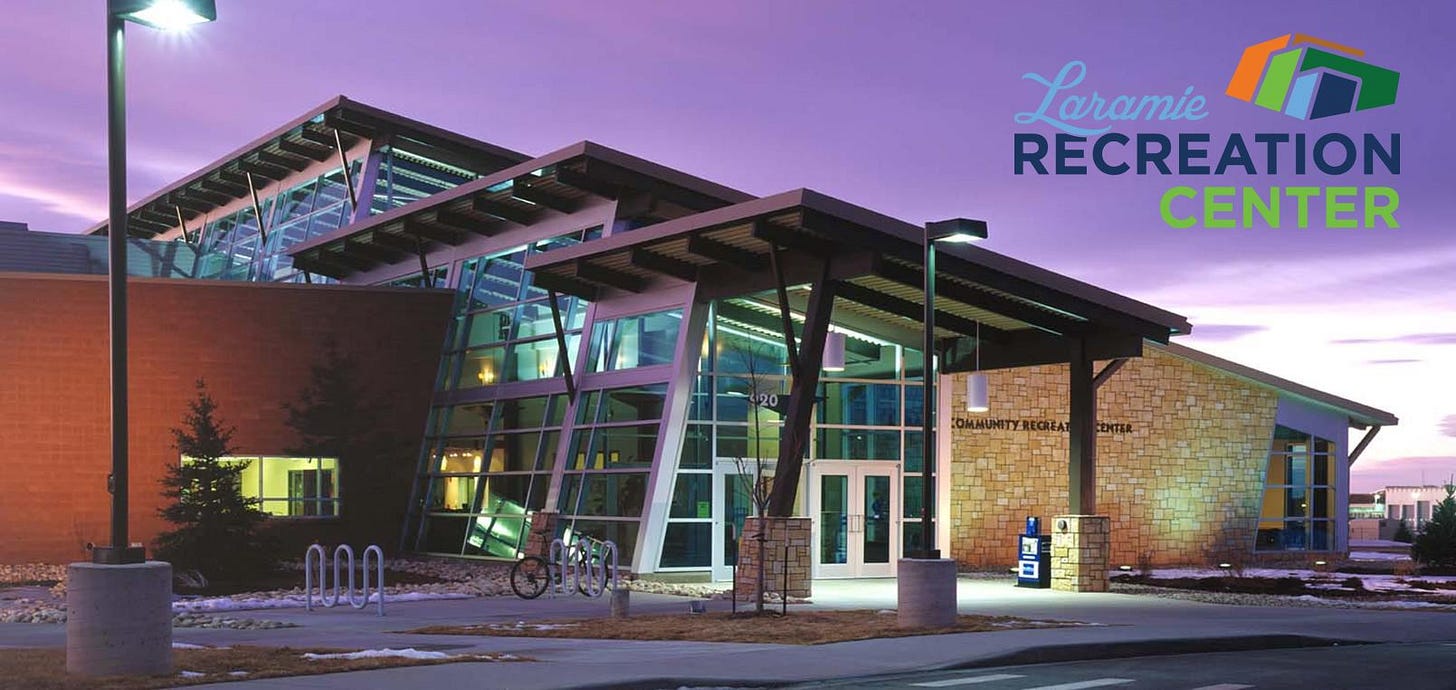Wind development paves city streets, optional pennies keep city afloat
As city leaders craft a budget for the next biennium, the post-pandemic world presents challenges and opportunities for Laramie and its local government.
In Laramie, consistent support for the 5th penny sales tax continues to make government operations possible — and a multi-million dollar windfall from renewable energy development will help pave city streets.
While the overall budget is currently stable — and balanced — there are challenges on the horizon. Keeping staff salaries competitive will likely be an ongoing area of concern, while careful budgeting and rate increases will likely be necessary to keep wastewater services sustainable.
These are some of the topline takeaways from the City of Laramie’s recommended biennial budget — the document that will guide local government spending for the next two years.
City staff craft the recommended budget under the guidance of City Manager Janine Jordan, who ultimately brings the document to city council for discussion, alteration and approval.
Jordan and other members of city staff presented the proposed budget this month across three work sessions spanning more than six hours, outlining the projected revenue and expenses for each division of the city, from public works to parks and recreation to the fire and police departments.
All told, the recommended budget for fiscal years 2025-2026 details the collection and use of some $107 million in government funds.
Administrative Services Director Jenn Wade told the council that the budget aims for sustainability. She added that it’s important to think about city services through that lens.
“If we don’t talk about those things … we’re just looking at revenues and expenses or expenditures and we’re not really paying attention to the big question,” Wade said. “Can we continue to provide government services into the future without interruption to our community? Because that really should be our goal.”
To do that, Wade said the city needs to refrain from spending money it doesn’t have. The problem is that the government has to estimate what it will make — through taxes, through government distributions, through water bills — to decide where it will spend its money today.
So city staff base their recommendations on conservative but hopefully realistic estimates of future revenue.
“We’re not here to stockpile reserves, we’re not here to make a profit,” Wade said. “But when you are planning for sustainable operation for a period of 10 years or so, you do want your appropriated expenditures to hug a little bit underneath your estimated revenues to make sure that you don’t flip that behavior.”

Opportunities for public comment
The council will gather for a special meeting Tuesday, during which they will offer and vote for amendments to the recommended budget. On June 4, the council will host a public hearing about the budget before voting on its adoption.
State law requires adoption by the third Tuesday in June; the budget covers fiscal years 2025-2026, which begin July 1, 2024.
The recommended budget can be found here. Previous years’ budgets can be found on the city’s official website.
Taxes and what they pay for
The city’s $107 million budget is divided into funds — some of which you’ve likely heard about even if you don’t follow government spending that closely. Each fund is a discrete pool of money fed by certain revenue sources and used for specific ends. The easiest to understand are the enterprise funds — water, wastewater and solid waste — which are supported by user fees and employed by the city to provide the service their names imply.
Other funds are more complex.
The largest fund, for example, is the general fund, which accounts for three out of every four dollars collected and spent by the city. The general fund is supported by taxes, payments from the state, grants awarded to the city, fines imposed on residents and other sources. But the majority of the general fund comes from taxes, including the “5th cent” sales tax and the online sales tax.
The general fund supports almost all of the services one associates with the city.
Of the $82 million city staff recommends spending from the general fund over the next two years, 24 percent is earmarked for the Laramie Police Department and 23 percent is earmarked for the Laramie Fire Department — meaning nearly half of the general fund goes toward “public safety,” broadly considered.
Additionally, 12 percent is earmarked for public works, 11 percent for parks and recreation, and 11 percent for general government, while smaller amounts are recommended for city administration, administrative services, the city attorney’s office, human resources, IT and a new division carved out of the others called Community and Economic Development, which is being run by the recently promoted former City Planner Derek Teini.
The recommended budget breaks down general fund expenditures by each of these divisions, showing where city staff would like the money to go and providing a narrative for changes from previous years.
5th and 6th pennies
These city services are made possible, in large part, by optional sales taxes that the local community has voted to adopt or continue.
The 5th cent tax — sometimes called the “5th penny” — funds 20-25 percent of basic governmental operations, depending on the year. Voters are given the opportunity every four years to continue or discontinue the city’s collection of this tax. Since 1986, they have consistently voted to keep it.
This tax will raise $13.75 million across the next two years, the recommended budget estimates.
“The 5th Cent is an important revenue source for Laramie,” it notes. “The City uses this tax for general operations like public safety and parks, community partnerships, and some routine capital improvements and equipment. This optional tax was renewed by voters in November 2022. Unlike the 4th Cent tax, for which the state is entitled to 69%, the City receives most of the 5th Cent tax collections. The state retains a 1% percent administrative fee.”
The recommended budget adds the city government is “appreciative of the community’s long-standing support.”
“Without renewal of this tax in 2022, the City would have been unable to continue providing its current level of services,” the budget states. “If the tax is not renewed in the future, the City Manager would recommend, and the City Council would evaluate and approve, a significant service reduction plan.”
While the 5th cent is a “general purpose” tax, the 6th cent is “specific purpose” and can only be used to fund the projects listed on the ballot and voted for by the people.
“Unlike the General Purpose tax, the Specific Purpose tax does not expire after four years,” the recommended budget notes. “Instead, this tax remains in place until approved projects are fully funded. Specific purpose taxes may not fund ordinary operations of local government except those operations that are related to a specific project.”
In 2018, Albany County approved a 6th cent specific purpose tax to collect a total of $60 million, of which the city will see $42 million, to be used mainly for capital construction. The city has collected about $28.5 million so far, or about 68 percent of the $42 million. Based on current trends, it’s estimated the city will collect the full amount in about 8-9 years, at which point the tax will expire.
“The tax, approved by voters in August 2018, contributes much to reducing deferred maintenance needs in street, storm water, parks, trails, and facilities infrastructure,” the recommended budget notes.
The specific projects are listed on page 142 of the recommended budget.
Revenue from the 6th cent does not go into the general fund. Rather it goes into its own fund tagged the “Specific Purpose Tax 2018 Fund.”
Wind development is paving Laramie streets
The sales tax feeding Laramie’s general fund is up this fiscal year by about 21 percent over the last fiscal year. That 21 percent increase represents an $8.3 million boost that is almost entirely explained by the collection of taxes related to wind development.
“I never thought I’d be saying this for Laramie but energy development is really benefiting us right now — to the tune of about $7 million in one-time sales and use tax collections to date in fiscal year 2024,” Director Wade told the council, adding this was “extraordinary for us.”
As the number of wind farms has expanded in Albany County, their construction has provided a notable boon for local government funding. Industrial developments like wind farms pay sales and use taxes like everyone else, but a portion of those taxes are redistributed by the Wyoming Department of Revenue to local communities in the form of impact assistance payments.
The city of Laramie received about $2.6 million in fiscal year 2023, and will receive about $7 million this fiscal year once all is said and done.
The city has received or will receive impact assistance from eight wind farms, including the Boswell Springs, Rock Creek and Rail Tie wind projects.
“The City has not received any payments for the Rail Tie project yet,” the recommended budget notes. “These payments are expected to begin in the upcoming biennium based on the project schedule.”
The $7 million this year is being put toward street maintenance.
“I am recommending these added resources be committed to making a sizable investment into the street system during the biennium amounting to more than $23 million across all funds,” City Manager Jordan writes in the introduction to the recommended budget. “These monies will be used to repair, build/rebuild and rehabilitate driving surfaces across the community as directed by our elected officials, and reinforced in the budget survey, where residents indicated strong community-wide support for improving the street system.”
In future years, those payments will be put to other uses, according to the recommended budget.
“In FY 2025 and FY 2026, funds have been allocated to support emergency services and public safety vehicles and equipment purchases in accordance with agreement terms,” the document notes.
Rec Center’s pandemic-era subsidy comes to an end
The COVID-19 pandemic affected the city’s budget in both good ways and bad. For one, user fees collected by the Laramie Rec Center plummeted when people stopped going. The recreation center has never been fully sufficient. It is subsidized, in part, by the general fund, with an annual transfer that closes the gap between the rec center’s collected user fees and its annual expenses.
This general fund transfer usually accounts for about 20-30 percent of the rec center’s budget. But during COVID, that transfer had to be increased. The general fund transfer in fiscal year 2021 was five times that of the transfer in fiscal year 2020.
“Since COVID in 2020, that subsidy has been remarkable,” Jordan told the council. “I believe that was necessary at the time … It was decimated from a revenue standpoint by COVID as were many of our businesses of that [retail] nature.”
The city was able to use pandemic-era federal assistance from the CARES Act to cover that gap, using one pandemic effect to counter another.
Now, however, the city is looking to return the rec center to its earlier financial balance, covering the lion’s share of its operations with user fees, while keeping those fees from growing too high with a 20-30 percent subsidy from the general fund.
Challenges: Staff salary and wastewater
A current compensation and staffing study that is nearing completion has already demonstrated that the City of Laramie is failing to offer competitive salaries — a fact that is hindering the city’s ability to recruit new employees.
“The City Manager is recommending compensation increases for staff in FY 2025,” the recommended budget states. “Employees covered by the Collective Bargaining Agreement will receive a pay plan adjustment and a 2.5% step increase. The City Manager is recommending a 2% increase for other benefited employees for FY 2025 and FY 2026.”
The staffing study, once complete, will “inform decisions about overall staffing levels,” according to the recommended budget.
“The recommended budget strives to maintain compensation levels for the biennium, and it will be essential to monitor workload and make disciplined decisions about workforce in coming years to ensure personnel expense aligns with growth in ongoing revenue sources,” Jordan writes in the budget’s introduction.
Earlier this year, the city council approved water and wastewater rate increases of 5 percent — an increase that works out to a few dollars per household per month. According to the recommended budget, that increase might not be enough to sustain the wastewater fund.
“Today, I would tell you it’s in a stable, albeit declining, financial position because of the significant changes, the cost increases we have experienced in this operation over the last several months,” Wade told the council. “So our capital plan has been revalued and the rate that is in effect would not be sufficient to support this utility in the long term.”
City staff will likely return to the council at some point with another recommended rate increase.
“We do need to be sure that we, of course, meet our capital needs, but also have a rate that the public can bear,” Wade said.







